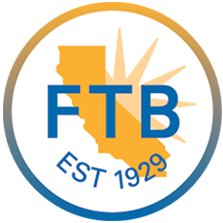
The inflation Reduction Act (IRA) became law in late 2022, and many assumed there would be no benefits for nonprofits. Fortunately, this is not the case. There is a lot to unpack from this bill, but our focus for this article is on the energy component. As such, the energy aspect of this bill aims to invest in domestic energy production and manufacturing to reduce carbon emissions by about 40 percent by 2030.
We will also discuss the opportunity for nonprofit organizations which include a number of incentives that could prove to be highly beneficial to Californian nonprofits.
What The Inflation Reduction Act Aim to Achieve
As mentioned above, the Inflation Reduction Act (IRA) includes several initiatives. But on the energy front, the legislation takes an aggressive push towards domestic energy production, with an aim to reduce carbon emissions by roughly 40% by 2030.
The bill contains a range of incentives and tax credits to spur emissions-free energy, electric vehicles, EV chargers, nuclear power, energy storage, and carbon capture, to name a few.
How The Inflation Reduction Act Tax Benefits Nonprofits
Before the IRA, nonprofit organizations had limited options for taking advantage of solar tax credits. In short, a non-profit would be faced with entering into a third-party agreement, a solar lease or power purchase agreement or similar financing options. Then the third-party would use the project’s solar tax credits on behalf of the non-profit. But the IRA changes this.
Now, the Inflation Reduction Act directly benefits nonprofits by paying them the amount of tax credit earned per solar electricity projects. The base amount will be 30%. For example, a $100,000 solar project, earning a 30% tax credit: if purchased by a nonprofit, that nonprofit will now receive a $30,000 check from the US Treasury.
It’s also important to note that this provision of the IRA only applies to nonprofits. For profit companies will not qualify for this direct payout.
In addition to the 30% tax credit, there is the potential for adders. For instance, a 10% adder for Domestic Content; a 10% adder if the project is built in an Energy Community, Coal Community or Brownfield Site. And a 10% adder for low-income communities, with an additional 10% for federally subsidized affordable housing.
Conclusion
Contact us for a full list of federal tax credits. In addition to the inflation reduction act benefits for nonprofits, tax credits and other initiatives may also apply to your organization. And if you’re contemplating a building project, ask us about qualifying for Sec. 179D deductions.





